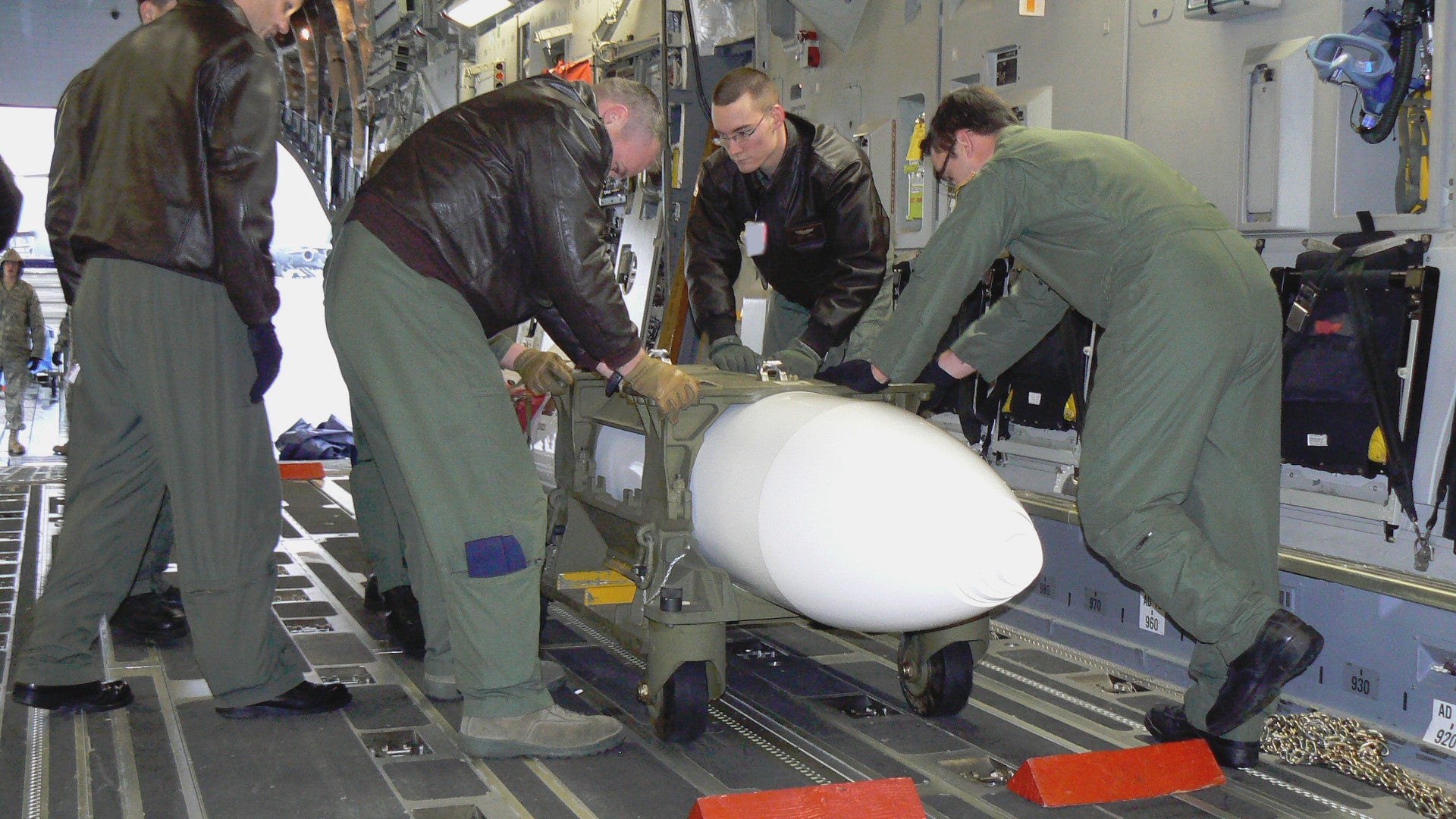The U.S. government is reportedly examining multiple plans for how it might remove approximately 50 B61 nuclear gravity bombs it keeps in ready storage at the American-operated portion of Turkey’s Incirlik Air Base. This comes a week after Turkey launched an operation into northern Syria targeting the primarily Kurdish U.S.-supported Syrian Democratic Forces, or SDF. This intervention has precipitated an all-new crisis in the region, prompted the start of at least a tactical withdrawal of U.S. forces from much of the country amid concerns they could be caught in the fighting, and led to calls for an arms embargo and major sanctions on the Turkish government.
The New York Times was the first to report that officials from the U.S. State Department and the U.S. Department of Energy, the latter of which oversees the U.S. nuclear weapons stockpile, were reviewing what to do about the B61s at Incirlik. These bombs have been a particularly serious security concern, as the War Zone has highlighted in the past, after U.S.-Turkish relations began to chill following an attempted coup against Turkey’s Recep Tayyip Erdogan in 2016. There continue to be completely unfounded conspiracy theories that the U.S. military was directly involved in the abortive putsch, which did involve Turkish Air Force units at Incirlik. There have been calls in Turkey since then for investigations into American military personnel and raids onto the American portions of the base to collect evidence, which you can read about more in this past War Zone piece.
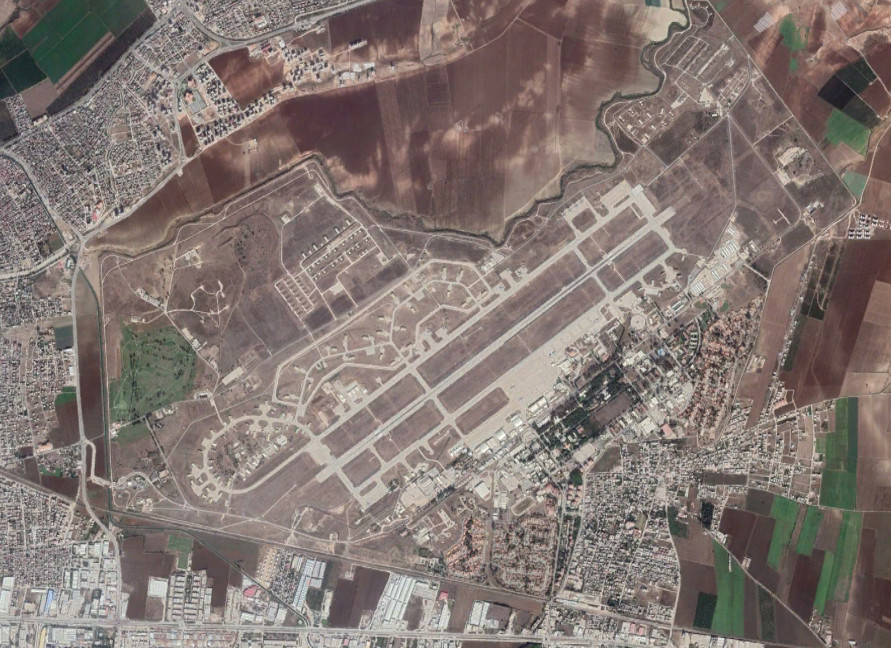
Turkey’s invasion of Northern Syria
Concerns about the B61s are undoubtedly higher now given the current situation in neighboring Syria. On Oct. 11, 2019, Turkish artillery “bracketed” a U.S. military position in the Syrian city of Kobane, firing shells within just hundreds of feet of the outpost edges of the outpost. This highly strategic city sits right on the border with Turkey and, at the time of writing, is under SDF control. The Pentagon has insisted that its Turkish counterparts know all of the locations of U.S. forces in Syria and this appears to have been a deliberate attempt to get the Americans to abandon their post, which they did, but only temporarily.
“In the last 24 hours, we learned that they [the Turkish military] likely intend to expand their attack further south than originally planned – and to the west,” U.S. Secretary of Defense Mark Esper said in an interview on Oct. 13, 2019. “I spoke with the president last night after discussions with the rest of the national security team and he directed that we begin a deliberate withdrawal of forces from northern Syria,” Esper continued.
In Syria itself, there is already a humanitarian catastrophe emerging, as well as the prospect of ISIS fighters escaping from SDF detention centers and rejoining their cause. There are also reports that the erstwhile U.S.-backed group has struck a deal with Syrian dictator Bashar Al Assad, and his Russian allies, that would see them all join forces to block the advance of Turkish forces, as well as Ankara’s local partners in the Turkish-backed Free Syrian Army (TFSA).
Syrian Arab Army forces, and militias aligned with Assad, as well as Turkish forces and the TFSA, are already reportedly converging on the area around Manbij, another highly strategic city in northern Syria and a major flashpoint over the years, which that you can read more in this past War Zone piece. There are separate indications that American personnel may be trying to block Assad’s advance toward Manbij, as well as Kobane, but this may just be in order to give them time to safely evacuate from the area themselves.
A growing number of U.S. lawmakers are now calling for an arms embargo against Turkey, as well as an array of sanctions. Trump and his Administration has offered his support to the idea of sanctions, despite at least tacitly approving the Turkish operation in a phone call with Erdogan on Oct. 6, 2019. Other countries, including a number of NATO allies, have already halted their own arms sales to Turkey and could be looking at additional sanctions, as well.
B61 nuclear bombs in Turkey
The risks of a larger conflict erupting in Syria, including from inadvertent clashes between the myriad parties present in the region, is extremely high. This, combined with the artillery incident in Kobane and the general worsening of U.S.-Turkish relations, may finally be changing the security calculous with regards to keeping the B61s in Turkey.
The United States has had those weapons forward-deployed at Incirlik since the Cold War as part of a broader nuclear response plan throughout NATO. There are between 150 and 200 total B61s deployed between Belgium, Germany, Italy, the Netherlands, and Turkey. Turkey is the only host country that is not part of the alliance’s nuclear sharing agreement, which gives the other countries involved access to these weapons, in close coordination with the United States, during a crisis. So, there are no aircraft actually based in Turkey that could deliver the weapons in a crisis.
It’s important to note that there are a number of security measures in place that mitigates the most immediate risks to the B61s, such as someone attempting to steal one and set it off. Each bomb has a coded lock mechanism known as a Permissive Action Link (PAL) that requires a unique 12-digit code in order to arm it. Handlers can also render them inert using a different command disable code. That’s not to say that there aren’t risks, including that someone could fashion the weapons into some form of a dirty bomb, as well as the general security nightmare that would result from any loose nuclear weapons, not to mention the national embarrassment.
As we wrote back in 2016:
“Still, it is unlikely that the 700-pound B61 nuclear bombs would be stolen from the facility. The storage area is made up of underground vaults, and its perimeter is ringed with two security fences and loads of surveillance, not to mention the compliment of soldiers there to protect the weapons. The facility has also received recent upgrades to make it more hardened against intrusion. However, if Turkey’s increasingly totalitarian political leadership were to take a vehemently anti-American stance, the security that protects the nukes would amount to a speed-bump for Turkey’s armed forces. Even a very well-orchestrated and large-scale terrorist attack on the compound could lead to a disastrous situation, even if only geopolitically.
On the other hand, you can’t simply steal a B61 nuclear bomb and use it as you wish. The fusing system is protected by a code mechanism called a Permissive Action Link (PAL). The codes needed to authorize their activation have to be provided by the National Command Authority. The weapons also must be continuously maintained to be combat effective.
These nuclear gravity bombs also feature a command disable mode which allows handlers to disable the weapon in fairly quick order. This is done by entering the right code to activate the bomb’s thermal battery, which also detaches the bomb’s control handle in the process. The battery overheats and fries the weapons electronics, thus making the weapon incapable of triggering its nuclear warhead.
Supposedly, the B-61 must be sent back to depot for a complete overhaul in order for it to be capable of functioning normally once again after a command disable action, although there are differing theories as to just how hard it would be for a very dedicated entity, especially a state actor, to get the weapon in working order once again. Some say it is quite possible.
If under an imminent threat of seizure, the facility’s security teams and the vaults that the bombs are held in could give technicians time to attempt to disable the weapons via the command disable function. If executed, and all the weapons were rendered useless, at least temporarily, even threatening the technicians directly to bring them back online would be a useless exercise.
The value of the actual warhead’s nuclear material is also debatable, as designing a weapon around it would require great know-how and testing would likely be required. Regardless, the weapons could be fashioned into crude but potentially very deadly dirty bombs.
The truth is, that if the base were seized, the US would likely attempt to flatten it before the weapons were able to be dispersed, but doing so would be unprecedented on a massive scale and it would take time to accomplish. A mission would likely have to originate out of the Middle East, the continental US, or using tactical aircraft out of Europe, although they would have to be able to carry sufficient “bunker busters” (BLU-109 equipped JDAMs, GBU-24/27) to strike all 21 storage vaults located at Incirlik. As we saw in Benghazi, tactical aircraft are not held at a high-readiness for strike operations in the region, and especially not equipped at the ready with bunker busters.
The idea of a country stealing nuclear weapons from the US has long been a staple of pop culture fascination, but the reality is far less sensational. Still, an incident where American nuclear weapons security was directly threatened could be a massive geopolitical failure for the United States, and if they were to fall into someone else’s hands, even those of a close former ally, it would be devastating to American credibility abroad, regardless of if they can actually be used or not.”
Getting nukes out of Incirlik
It is unclear how advanced the U.S. government’s discussions about pulling the B61 bombs out of Incirlik might be. The Times report does not specifically say that the U.S. military has been involved in the review of the possible options, though it is hard to see how that could be possible as they would almost certainly be responsible, at least in part, for transporting the weapons out of the country.
While we don’t know what courses of action might be under consideration, any option would be a major logistical undertaking, even under the best of circumstances. The most likely plan would be to fly the bombs out as part of what is known as a Prime Nuclear Airlift Force (PNAF) operation using specifically designated U.S. Air Force C-17 Globemaster IIIs and crews trained in the movement of nuclear weapons and who are vetted under the Nuclear Weapons Personnel Reliability Assurance Program, though properly configured and crewed C-130 Hercules and C-5 Galaxy airlifters are also options, if necessary.
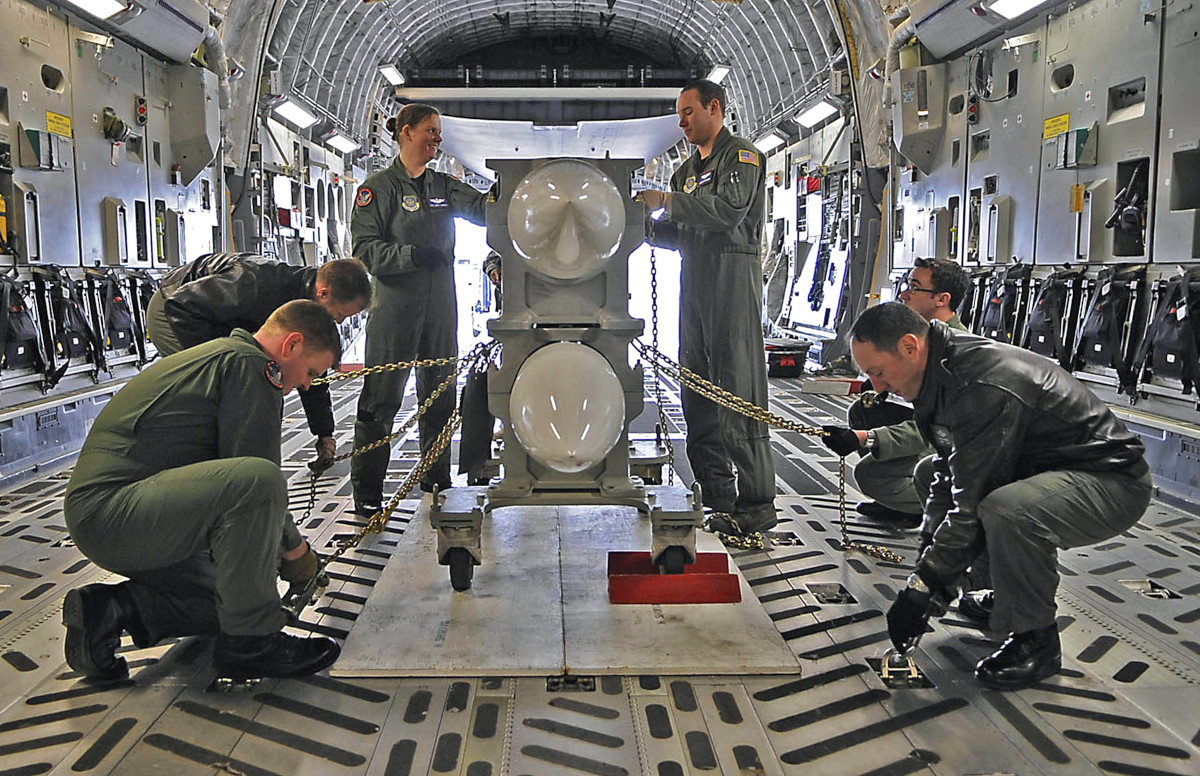
Regardless, moving nuclear weapons requires the utmost safety and security to ensure the weapons do not get lost or stolen and that they do not get damaged or otherwise improperly handled, potentially in such a way that leads to a devastating nuclear or radiological accident. Even just flying nuclear material around for disposal is often a highly secretive and controlled affair.
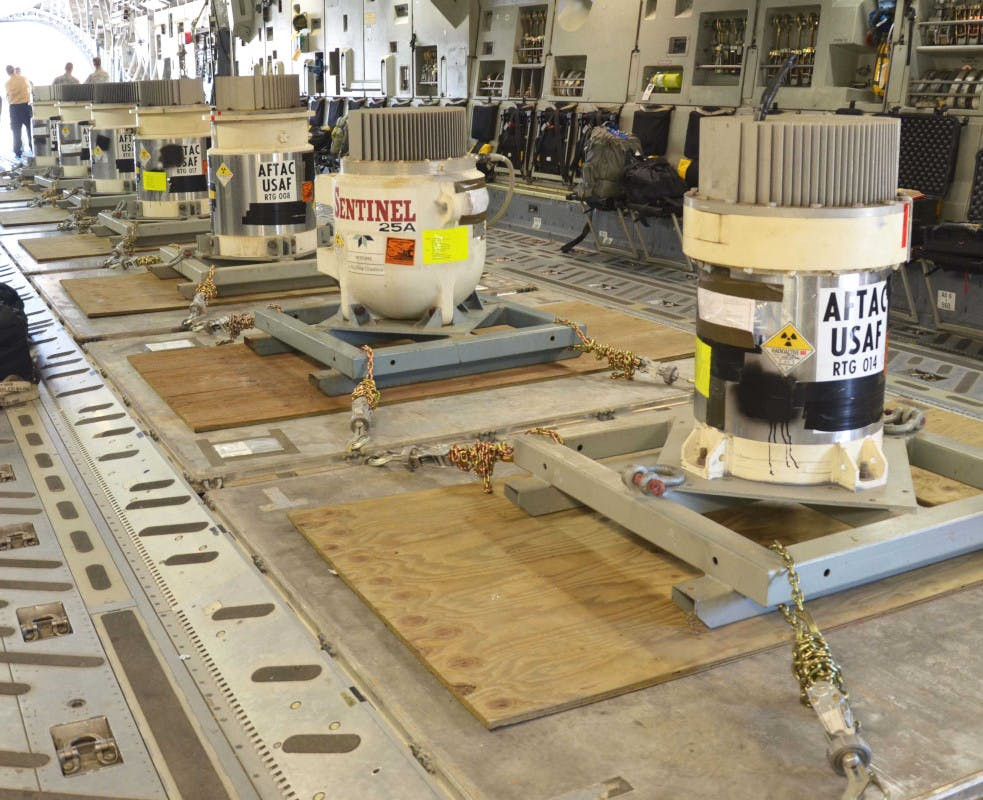
“Select the safest, most reliable aircraft available for PNAF missions,” according to one Air Force manual titled Safety Rules for Nuclear Logistics Transport By The Prime Nuclear Airlift Force. “Fuel PNAF aircraft with the best low-volatility fuel available which is compatible with aircraft engine operation.”
The stipulations regarding flight route restrictions and aerial refueling, which you can read below in full, are particularly notable in this context:
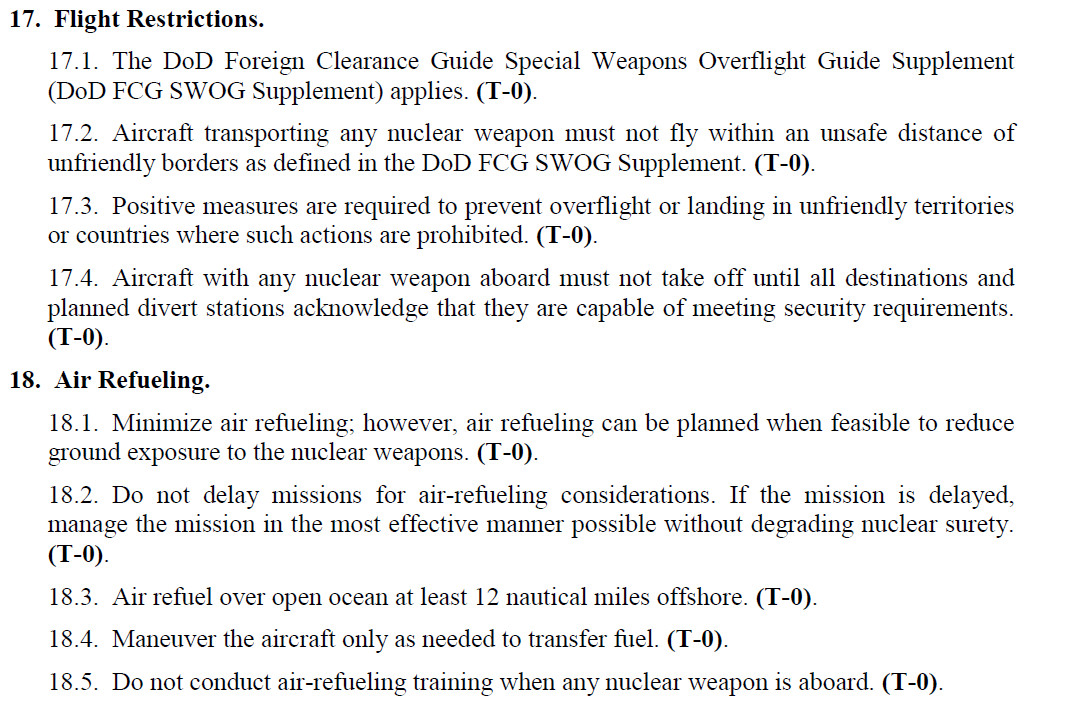
The base does sit within 250 miles of the Syrian border, but there’s no indication that this meet’s the Pentagon’s definition of an “unsafe distance” for transporting nuclear weapons by air. Since the civil war in Syria erupted in 2011, there have been limited movements of bombs in and our of Turkey in order to return them to the United States for maintenance and upgrades, according to our trust sources.
That doesn’t mean that planning a route from Incirlik with these restrictions and in order to ensure access to other airbases or airports that meet various security requirements in the event of an inflight emergency, couldn’t still be immensely complicated. On top of that, just while personnel are on the ground loading nuclear weapons and otherwise conducting PNAF missions the Air Force rules “prohibit direct overflight of PNAF ground operations within the airspace controlled by the installation.” This would require some level of direct coordination with Turkish officials at Incirlik, as well.
For safety and surety reasons, it is also highly unlikely that one aircraft would move all 50 of the bombs, adding to the complexity of the overall operation. It is possible that the U.S. military could fly the weapons to an intermediate location, such as to Aviano Air Base in Italy, which also hosts B61s, before moving them on to a final destination, as well. Unfortunately, many NATO members, even those who host nuclear weapons, are generally reluctant to be involved with them in any way publicly due to domestic political considerations, which could add to the existing complications.
There are other transportation methods, including movement by road convoy using specially protected trucks or bringing them to a port for shipment out of the region by sea. However, the idea that the United States would choose either of these options seems remote, especially given the state of relations with Turkey and risks that various state actors and non-state militant groups in the region pose.
“Erdogan’s hostages”
Whatever the actual physical method of getting them out of the country might be, there are intangible complexities, as well, too. “Those weapons, one senior official said, were now essentially Erdogan’s hostages,” given the current geopolitical situation, according to The Times.
“To fly them out of Incirlik would be to mark the de facto end of the Turkish-American alliance,” the story explained. “To keep them there, though, is to perpetuate a nuclear vulnerability that should have been eliminated years ago.”
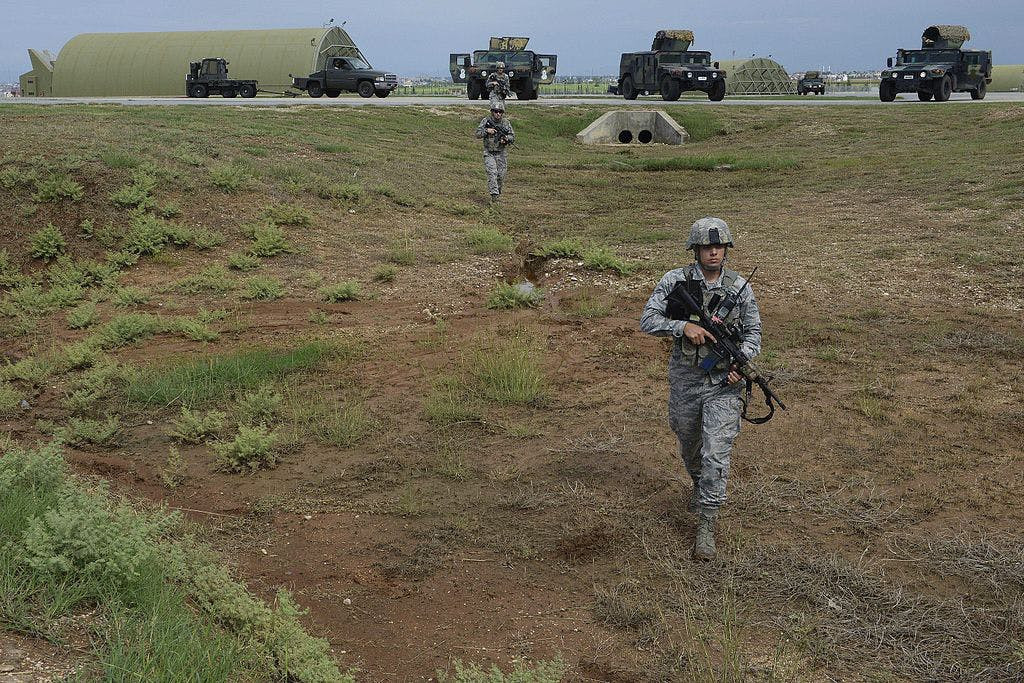
Removing the B61s would not remove Turkey from the deterrent protection offered by NATO’s nuclear umbrella, but it certainly would be a very clear statement about the state of U.S.-Turkish relations. That could have serious ramifications for the future of the alliance in general, which has been trying to tread very carefully around the growing spat between two of its members for some time now.
Ankara and Washington have been sparring in recent years over a wide array of issues, including SDF. Turkey’s purchase of the Russian S-400 air defense system also led to its suspension from the F-35 Joint Strike Fighter program earlier this year. In addition, though Erdogan has a close relationship with Trump, many of his policies have been increasingly authoritarian and he has been moving his country closer to Russia’s sphere of influence as ties with the United States have worsened. Turkey and Russia, together with Iran, another American opponent that stands to benefit from the new chaos in Syria, have all been cooperating on a diplomatic effort to bring an end to the country’s civil war in a way that suits their various national interests, as well.
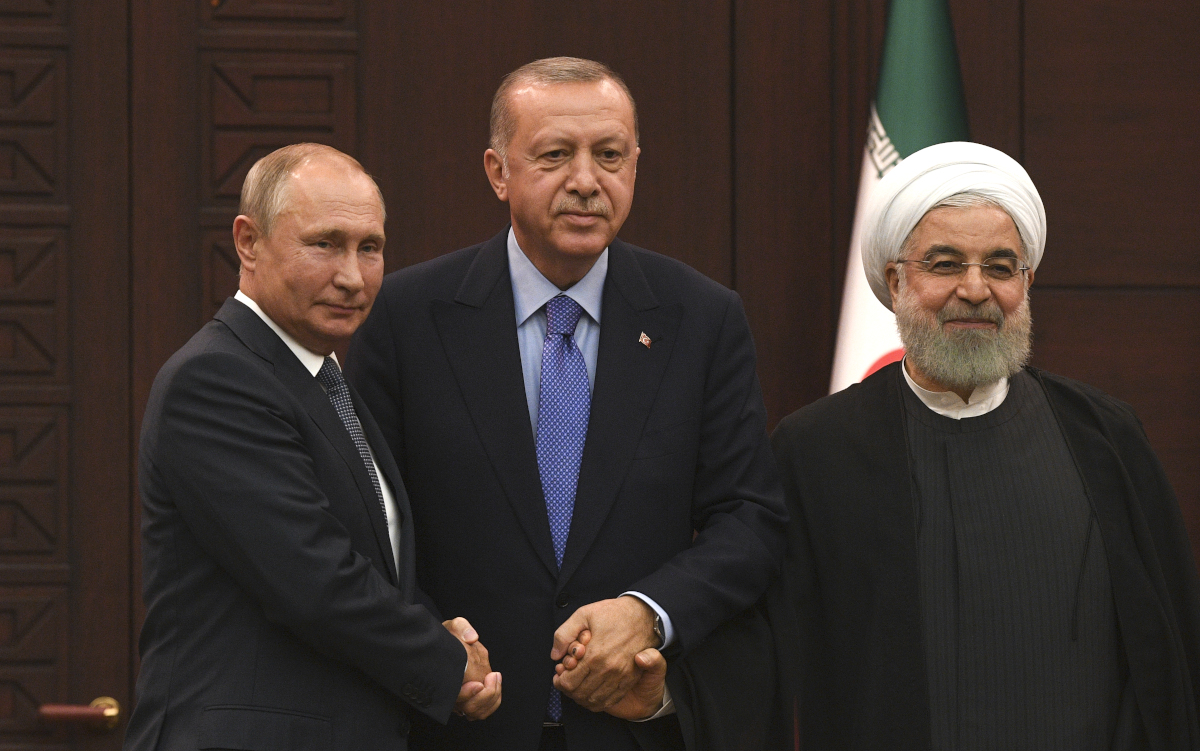
It might also prompt new calls within Turkey, which is presently a member of the Non-Proliferation Treaty (NPT), to consider developing its own nuclear arsenal. “Some countries have missiles with nuclear warheads, not one or two. But [they tell us] we can’t have them,” Ergodan had said at a gathering of his members from his Justice and Development Party, also known by the Turkish acronym AK, in September 2019.
“This, I cannot accept,” the Turkish President continued. “There is no developed nation in the world that doesn’t have them,” he added, despite the fact that the vast majority of the developed world does not have nuclear weapons.
It’s unclear how serious Ergodan might have been about the prospect of a Turkish nuclear stockpile. Reports have suggested this may have been more of a pointed comment about Israel’s well known, but unacknowledged nuclear arsenal, which the United States and the rest of the West tolerates. It also came amid broader concerns about a new Middle East nuclear arms race that followed reports that Saudi Arabia might also be interested in developing such weapons to counter Iran. Though the regime in Tehran insists that it is not developing nuclear weapons at present and there is no hard evidence to the contrary, Iranian nuclear ambitions remain a topic of intense debate.
At the same time, it had already appeared increasingly untenable to keep the B61s in Turkey from a basic security standpoint and those concerns have only grown in the past week. After years of ignoring the issue and not taking the opportunity to remove the bombs when it might have been possible to present it as a mutual decision or as a byproduct of the B61-12 upgrade program, it may be impossible to ignore the risks of keeping the weapons where they are.
Contact the author: joe@thedrive.com
